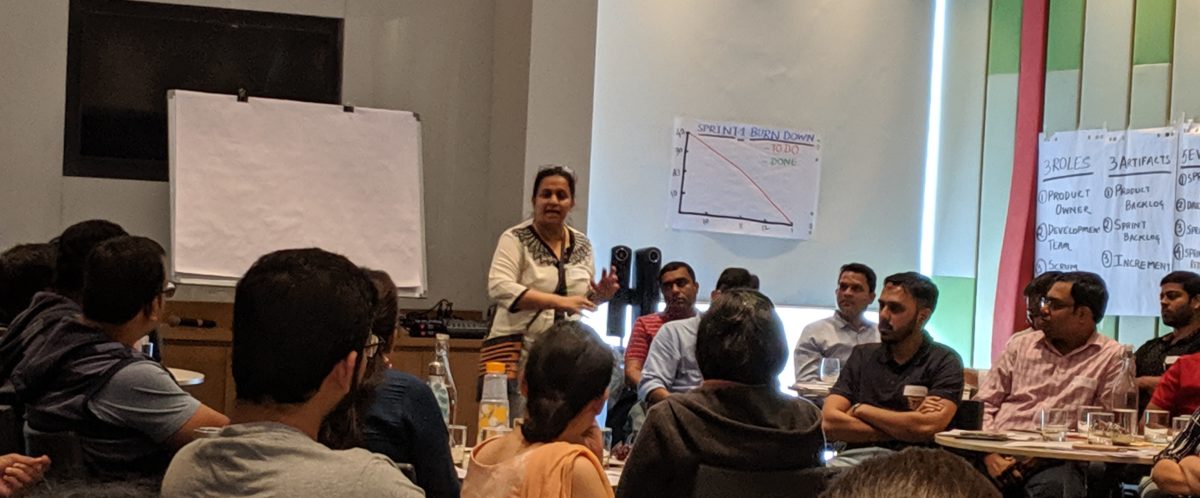Scrum Believes in Self Managed Team. That means, the team has the autonomy to organize itself to best complete the work items. Scrum has a completely different attitude to the conventional approach in that it explicitly puts the responsibility of solving problems into the hands of a self-managing team. There is no provision for someone to “make sure” it all goes OK, there is no “safety net” should things start “going wrong”. Scrum believes that the most appropriate people to solve a problem are those who need to deal with it.
- A key part of self Managed team is that, whatever the solution/design/approach the team comes up with, it is more likely to take into account local issues and current, relevant knowledge that it is more likely to work. This also has an added benefit in that, when things get hard, the team are much more committed to making things work as it is their decision/solution etc. They will find ways for it to work, whereas if it were someone else’s decision they would be less motivated and may say something like “I didn’t think it would work, but it’s some one else’s problem”
- Previously even a supposedly “empowered team” had a project manager to fall back on, someone who would carry the can if things went wrong (and perhaps take the glory if things went well) and so, when the crunch came, they knew the responsibility would be taken up by someone else.
- The vast majority of problems (or opportunities) facing our companies and teams today are complex ones. Everything we come up against, or ideas we come up with involve ever-increasing levels of complexity that usually cannot be solved by one person’s mind. Therefore we need to harness the motivated minds of a team where the value of the whole is greater than the sum of the parts.
- There is nowhere to hide in a self Managed team, everyone is responsible for the performance of everyone. No individual team member is held accountable.
- Self Managed team can greatly increase productivity, motivation and satisfaction for all concerned. This, coupled with more suitable deliverables is a true win:win scenario. However, in order for the benefits of self-organization to take root and bear fruit, we need a conducive environment for it to flourish. We need to have a culture of “all information is good information”, an understanding that “everyone did the best they could given the circumstances”. What matters is the project success rather than individual success.
Note – earlier version of Scrum Guide mentioned the term “self Oragnized”







